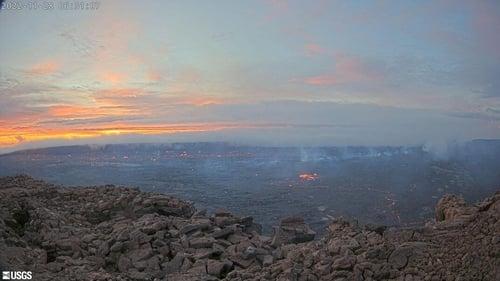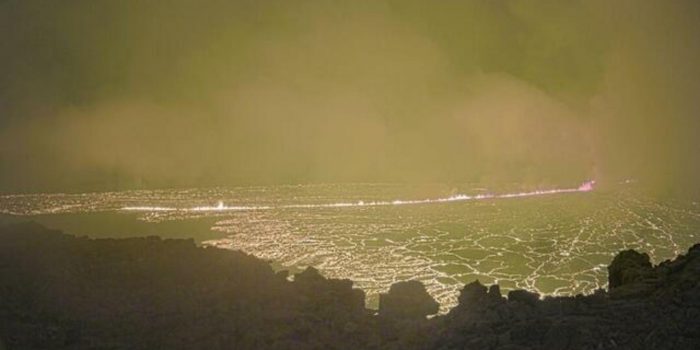Hawaii’s Mauna Loa, the world’s largest active volcano, started erupting Sunday night, and lava was flowing from its summit by Monday morning, the U.S. Geological Survey said. The lava wasn’t expected to threaten populated areas, officials said. “Lava flows are not threatening any downslope communities, and all indications are that the eruption will remain in the Northeast Rift Zone,” the USGS said in a statement.
While the eruption on the main island of the remote US state in the Pacific remains confined within the basin at the top of the volcano, called the caldera, “if the eruptive vents migrate outside its walls, lava flows may move rapidly downslope,” according to the USGS. Hawaii authorities said no evacuation orders have been given, although the summit area and several roads in the region were closed.

According to the USGS, the volcano’s submarine flanks extend for miles below sea level to the ocean floor, which is depressed by Mauna Loa’s massive mass, raising the summit to 17 kilometers (55,700 feet) above its base.
Mauna Loa, one of six active volcanoes on the Hawaiian Islands, has erupted 33 times since 1843, according to the USGS. The most recent eruption, in 1984, lasted 22 days and produced lava flows that reached within about seven kilometers (four miles) of Hilo, a city to the northeast that is home to about 44,000 people today. Kilauea, a volcano on the southeastern flank of Mauna Loa, erupted almost continuously between 1983 and 2019, and a current minor eruption there has been ongoing for months.

As Hawaii’s National Park Service notes, the world’s largest active volcano used to erupt once every five years and has done so 33 times since 1843, the year the islands gained independence from Britain and France. Even so, it’s been 38 years since its last eruption, which until this weekend was “the volcano’s longest quiet period since written records have been kept,” the NPS added. That said, the USGS is hoping that this time, the eruption will stay contained to the summit’s Moku’weoweo caldera. “However,” the government advisory added, “if the eruptive vents migrate outside its walls, lava flows may move rapidly downslope.” It’s been a long time coming, and hopefully, the eruption will remain a fascinating geological curiosity and not trigger tragedy.


